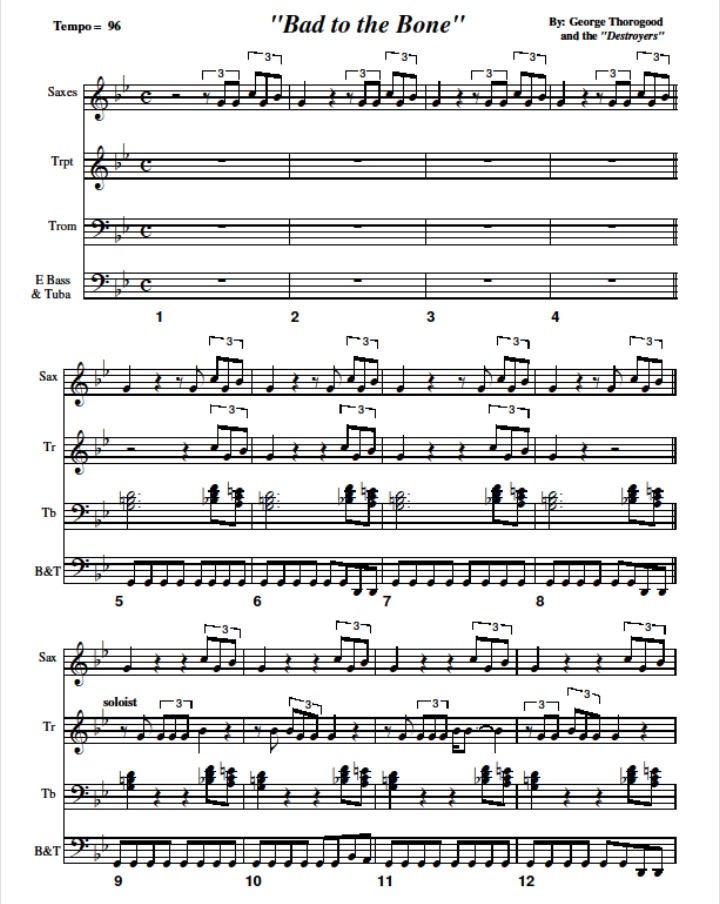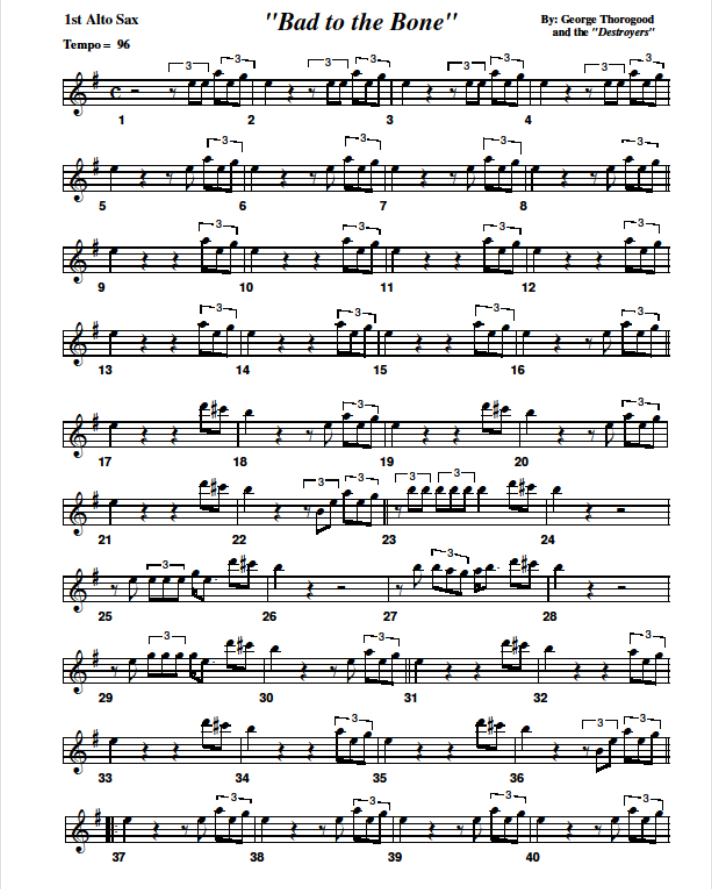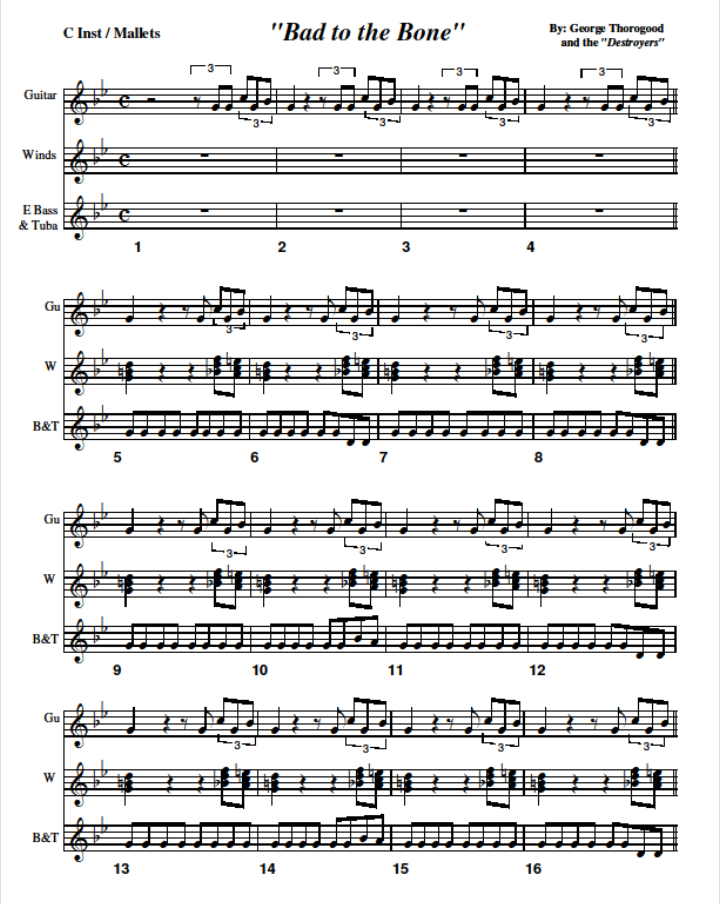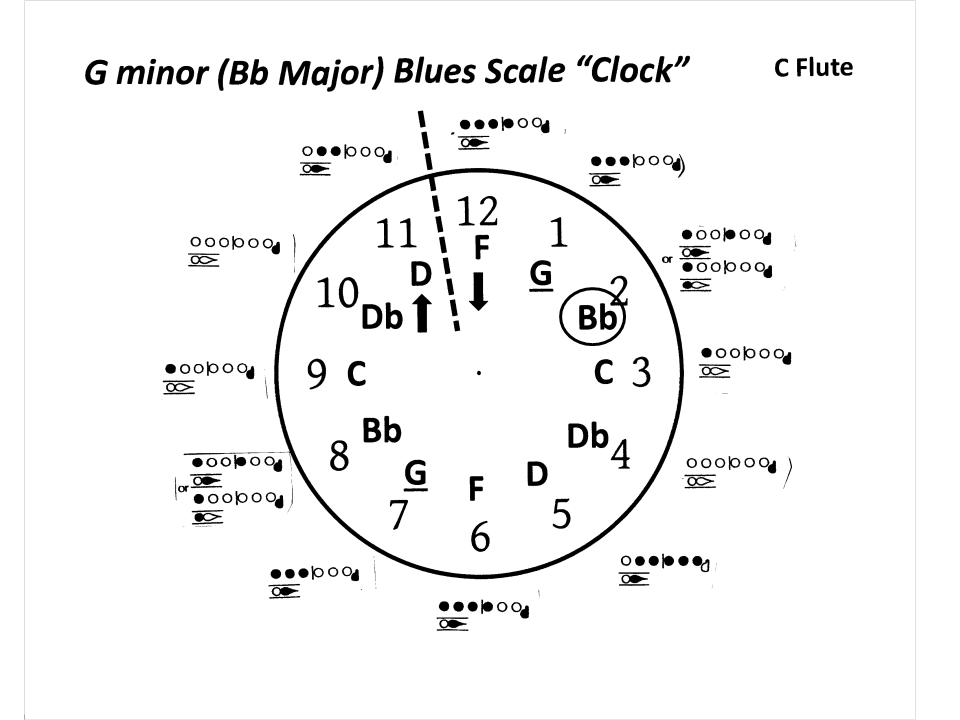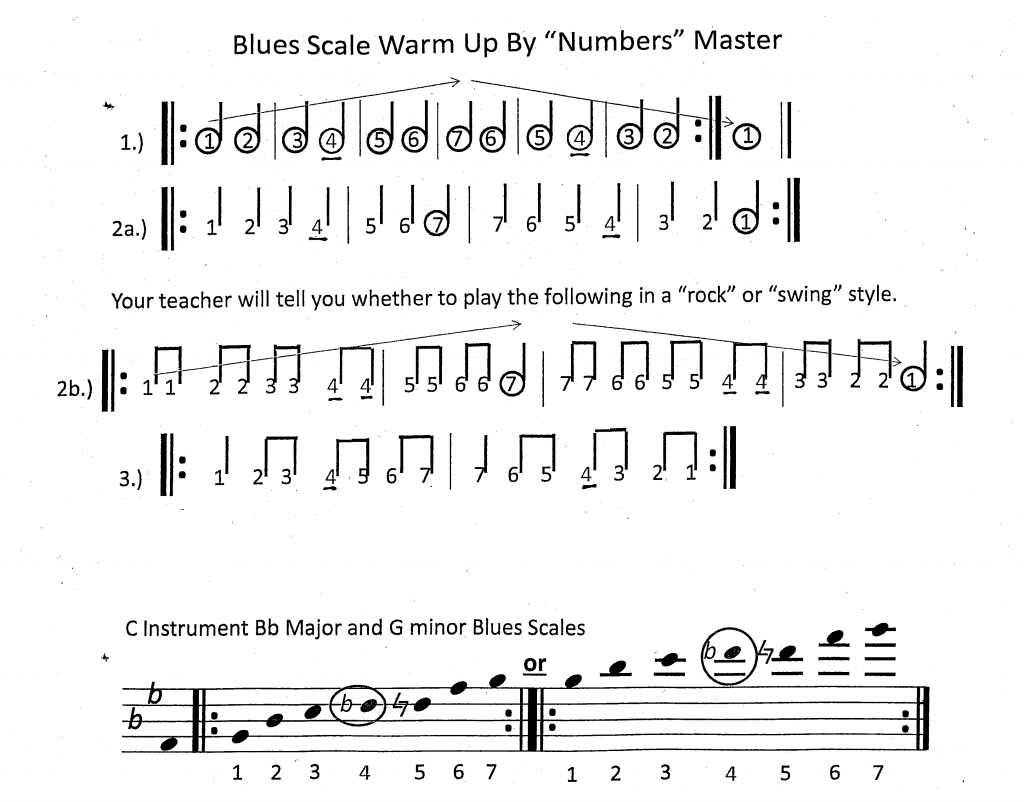Project Title: “Bad to the Bone” G minor blues scale
Instructions: This song was originally done by George Thorogood and the “Destroyers” and is a rock “classic of the 1980’s. Its familiar (and very repetitive) guitar rift and very basic 12/8 bass line made it one of the “greats” of that time. I selected it as another excellent “rock” example of simple chording in that only the “I” chord is used. For that reason, the “G” minor blues scale is used throughout when improvising with it. Soloing with the “Count Offs” audio file, has the soloist(s) improvising with the original recording done by Mr. Thorogood. After that there are two basic directions I took with this assignment, where the first was a very basic arrangement scored for jazz ensemble/combo. There is a lot of unison in the sax and trumpet parts as the trombones primarily provide the “harmonization”. Here again, you will notice the rhythms and back up parts a very repetitious, which is another common occurrence in rock music of that era. Another direction you could go is that I have written “kind of a trio”, with the same basic part structures that are in the first assignment’s version. With this second assignment one instrument (or a combination of any instruments) can cover all of the parts needed to backup the soloists(s) when improvising.
The additional audio files include a Finale “playback”, where a student (or small group) can play along with the jazz ensemble/combo arrangement with any missing instrument “gaps” filled in. After that I isolated four instrument parts from the ensemble version allowing each part to practice, separately playing along with the drum set. The instruments that are featured along with drum set include the, saxophone, trumpet, trombone and electric bass (tuba) parts. Once again ALL jazz and concert instrument have parts written for this assignment. If you just want “rep” time soloing, the last audio file starts at the beginning and then from bar #’s 17 to 30 different soloists take turns during this “vamp” section that loops for about eight minutes. If you are using more than one instrument with this MP3, the additional players (when not soloing) should play their parts as written using either of the assignment/lesson variations.
Note: At the very end, there is a ritardando. There are two fermatas on the second and third to the last notes. On the second one (the low brass) the soloist playing should continue to improvise until the very last unison note, which is known as a “stinger”. The musical term for an extended ending allowing a soloist’s improvisation to finish off a song is a “cadenza”.
